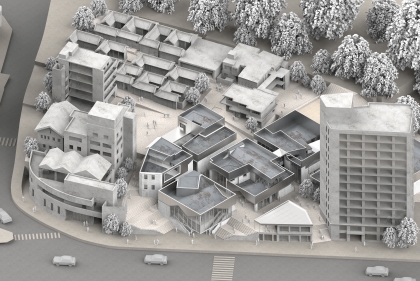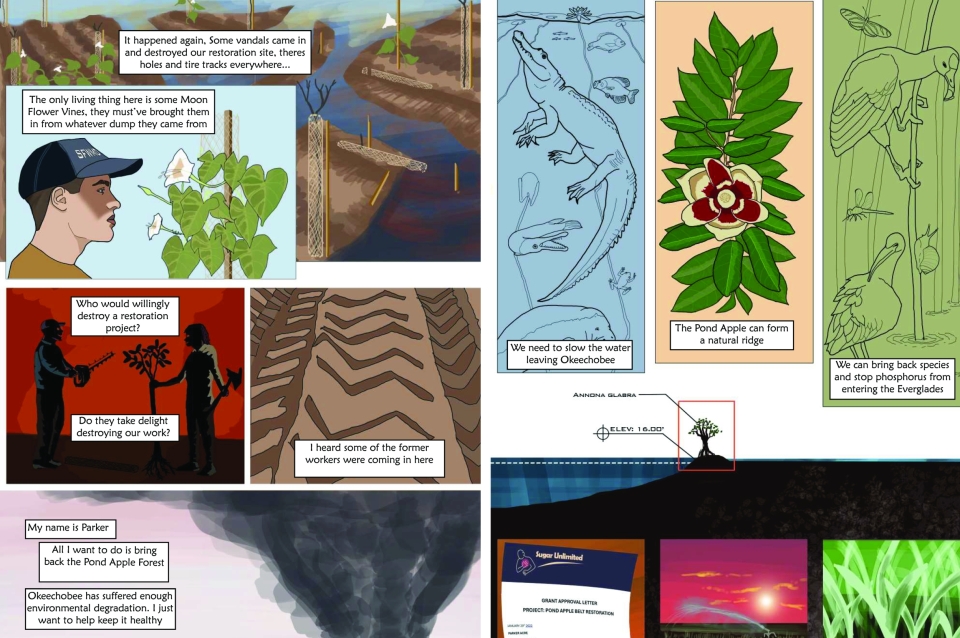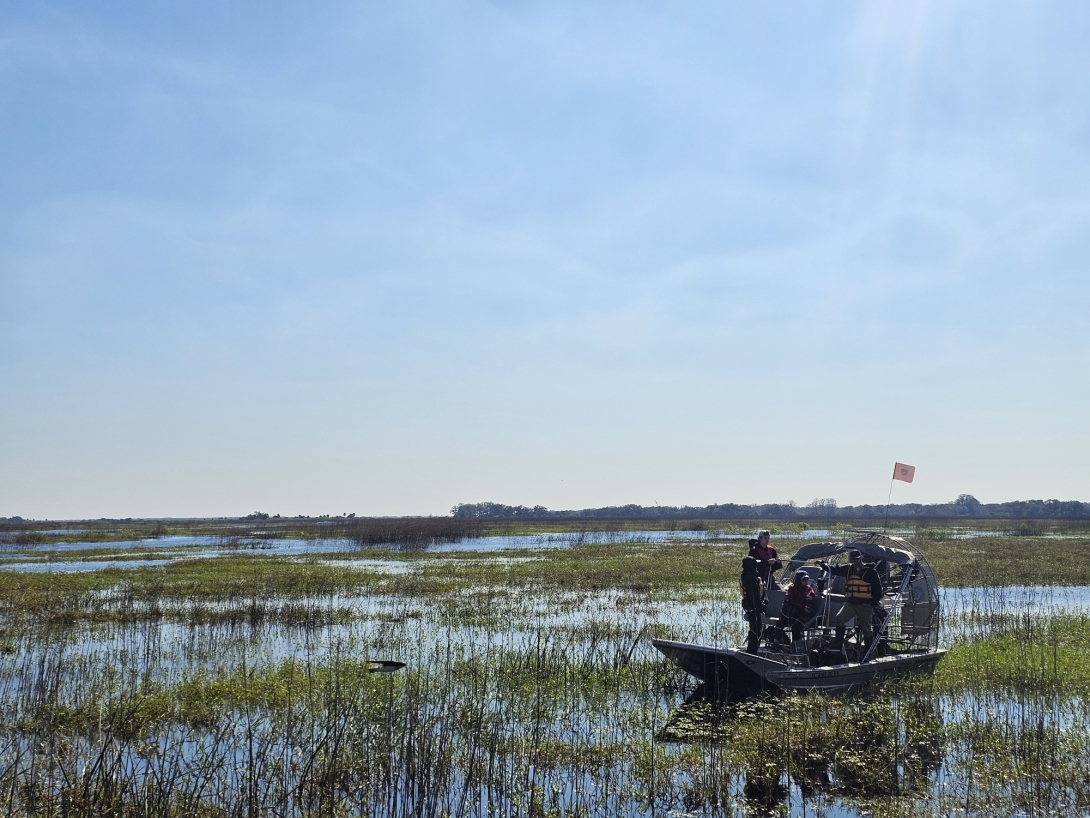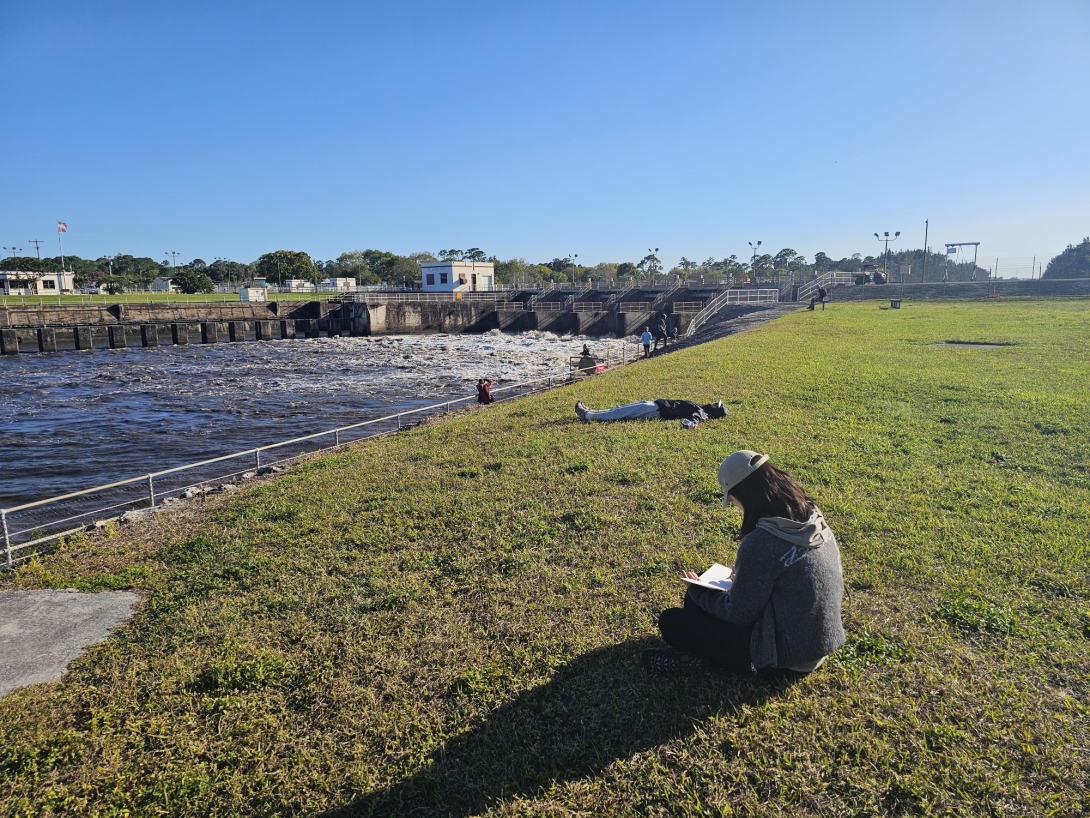August 30, 2024
Alternative Landscapes
For students in Sean Burkholder’s landscape architecture studios, comics are a vehicle for deeply-researched responses to environmental urgencies.
By Jared Brey
Close
Work by Keith Scheideler and Gunay Mmadova
Work by Maura McDaniel
Work by Nina Lehrecke
Work by Caroline Schoeller
“We still want the future to be better than the present,” Burkholder says, “But if you put people in a different present, they’ll imagine a different future collectively. (Photo Caroline Schoeller (MLA’24)


 View Slideshow
View Slideshow



